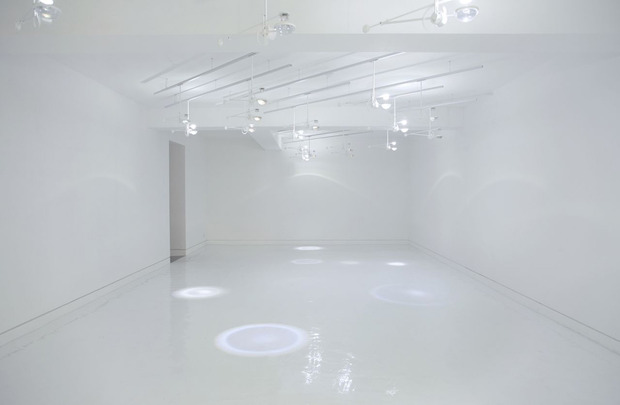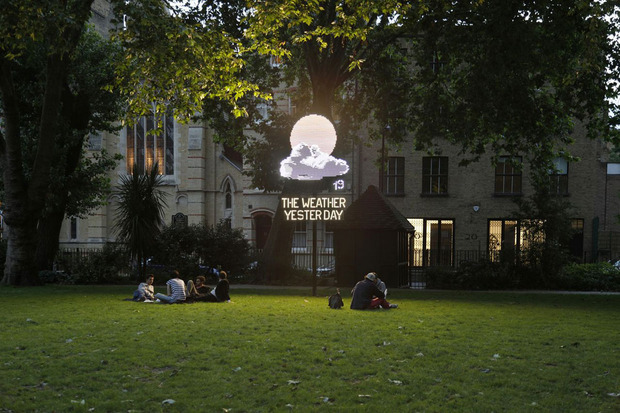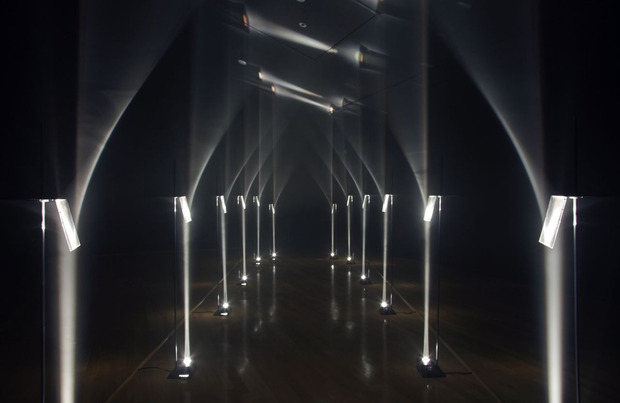Charged: Troika
Previewing the London collective’s installation in Seoul, “Persistent Illusions”

Founded by three friends upon graduating from Londons Royal College of Art in 2003, Troika is a collective and Cool Hunting favorite whose work continues to forge new ground in art. Installing site-specific projects everywhere from Mexico City to Brussels to Seoul, the founding members Conny Freyer, Eva Rucki and Sebastien Noel have offered their interdisciplinary vision to audiences via books, public spaces, museums and galleries around the world.

Take their recent absurdist sculpture The Weather Yesterday, which was set in London’s Hoxton Square and displayed, as you might imagine, yesterday’s weather in post-real-time. Front and center was the group’s playful take on the British obsession with the weather as well as modern society’s obsessive, almost compulsive, desire to be up-to-datereorienting the conversation from future to past while utilizing the same digital technology.

For their latest exhibition, Troika is traveling to the Daelim Museum for Contemporary Art for their first solo show in Seoul. Entitled “Persistent Illusions” in an echo of one of Albert Einstein’s more famous phrases, the show will be an amalgamation of existing and new works including sculptures, drawings and more immersive installations. On the eve of the exhibition’s opening, we took the chance to catch up with the artists to get a preview.
Where did the idea for this exhibition begin?
The exhibition brings together both existing work and new pieces.
Our work and so the exhibition looks at how we live in a society dominated by a very rational approach, a mathematical description of the world, a world thriving on quantitative research, quantifiable information, tick boxing, efficiency and technological and scientific progress.

Investigating the nature of knowledge seems to be a persistent theme in the works on display.
One of the main questions we are asking through the work is why we know what we know. How we gather knowledge, and whether this knowledge is certain. This is both a question of our sensorial abilities and limitations, but also of certain models and belief systems we surround ourselves with, whether scientific, religious, economic, technological and so on.
How does science and technology influence your process?
Science explains reality to us by way of scientific models. Yet, when we recreate an image of reality that is based on the knowledge that we derive from a model, we create an image that mirrors the knowledge the model is based on. So while this is a highly reduced version of reality, we are fascinated by the paradoxes and the poetry that can be found in the formal language of these scientific models, language and processes when read with a humanist mind.Persistent Illusions refers to this.Reality as a personal illusion.By emphasizing these and altering the reading of the model we are intending to make way for a different way of seeing and ultimately space for reconsidering what we think we know.Each work in some way manifests this idea.

What are some of the new works at this exhibition? How do they fit in with the older projects?
While some of the older works were more directly commenting on how and why we use technology, the more recent works look at where that striving for technological mastery stems from. It also zooms out a little more, looks at the wider context, a society that has been predominantly built on the ideas of the Enlightenment, a very rational way of seeing the world.Science, technology being its offspring,has been put into place to ground us in the larger scheme of things. It is a way of talking about the universe in words that are able to bind it to a common reality. Over time, however, we have come to believe that reason alone cant achieve this understanding. Our work is a reflection on this. It is to test the boundaries of reality, to talk of ideals, and to make visible the breaking points and failures of these ideals.
Arcades is one of the more recent works. It is a merger between agnostic reason and intuitive belief. We use light to construct a space; shaping and bending what is inherently non-physical. And while general knowledge tells us light cannot be bent, you need to be prepared to suspend this judgment in favor of the experience, all the while knowing that it can only be an illusion.

The exhibits name references Albert Einstein. What is the connection?
Apart from being a scientist who hugely influenced the way we view the world today, Einstein was a humanist, and also someone that surprisingly did not entirely disregard the existence of a spiritual world, albeit not a personal god. He often referred to the limits of our intellectual understanding, which in some way is also central to our exhibition, the idea that perhaps not everything is knowable. That it might not only be a matter of time until we have deciphered and understood nature and everything that surrounds us.
“Persistent Illusions” is currently on view at Seoul’s Daelim Museum, and runs through 12 October 2014.
Images courtesy of Troika












